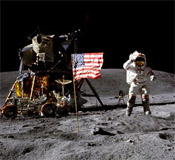United States National Aeronautics and Space Administration
Document Type
Article
Date of this Version
2009
Citation
Biofouling Vol. 25, No. 5, July 2009, 445–454
Abstract
Capillary dependent systems are highly influenced by surface fouling and may degrade as material surface properties change. In anticipation of a spacecraft microgravity fluids management system exposed to highly variable wetting conditions, the impact of urine wastewater fouling on capillary contact angle was examined. The results indicate that, in general, surface fouling can decrease the contact angle when crystalline structures or biofilms form. Small crystalline growth on the order of 10 µm can lower advancing contact angles θadv by approximately 30˚, while biofilm growth can lower it by approximately 15˚. Vacuum drying of fouled surfaces increased θadv by about 8˚, and defects greater in height than 5% of the capillary length increased θadv by approximately 30˚. These trends may indicate that promotion of wastewater fouling may improve the performance of capillary dependent fluids management systems. These results may also influence terrestrial technologies, including medical catheters and sustainable wastewater treatment systems exposed to wastewater fouling.



Comments
U.S. Government Work